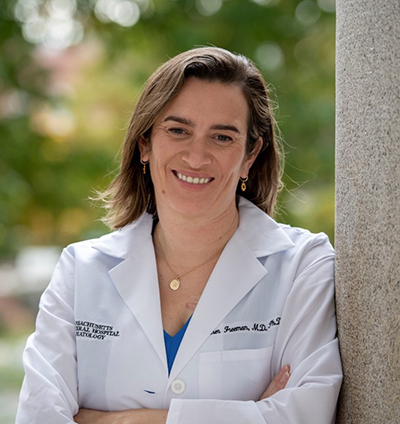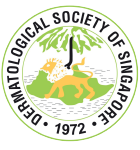WCD Spots – Dr. Esther Freeman

An interview with Dr. Esther Freeman, about her upcoming keynote talk on Dermatology in low-resource settings.

Esther Freeman. Greetings. I’m Esther Freeman, director of Global Health Dermatology at Massachusetts General Hospital and Harvard Medical School.
What is meant by low-resource settings?
EF. So, dermatologic care really varies across the world. For example, in the United States, we have 34 dermatologists per million people; this increases in Europe to 50 dermatologists per million people. But if you look at sub-Saharan Africa, there are between zero to three dermatologists per million people. So, when we talk about low resource or under-resourced settings, we’re really talking about places around the globe that don’t have access to healthcare, and particularly in terms of dermatologic care, really don’t have access to dermatologists or to frontline skin health.
What is the approach to dermatology in such settings?
EF. The approach into dermatology in resource limited settings is multifactorial. One is really trying to increase the training of our workforce through mentorship, through increasing capacity of training programs, and also through teledermatology, so through many different ways we can increase access to care.
Another important aspect of increasing access to care, is to think about who is delivering care in low resource or under-resourced settings. For example, in one of the places where I work in East Africa, it’s not necessarily a dermatologist who’s seeing patients with a rash; it’s often what we consider frontline healthcare workers, such as clinical officers or other cadres of healthcare workers, such as nurses.
One thing that we have to think about as dermatologists is how do we task shift or how do we train people where there aren’t a lot of dermatologists, to be able to recognise some basic rashes in skin issues, in skin cancers, so that we can ultimately help reach more patients.
Do you believe teledermatology is a viable option?
EF. Teledermatology is definitely one way we can increase access to care, but teledermatology by itself, without increased access to training and without increased numbers of dermatologists really serving in the public sector worldwide, teledermatology just by itself probably is not the whole answer. I think this is a multifactorial problem that requires a multifactorial solution.
How’s access to care changing in the last 10 years?
EF. Access to care really is changing over time, and part of this is because I think we live in a much more interconnected world. After the global Covid-19 pandemic, we all became much more used to using Zoom, for example, or other electronic platforms as means of communication and as means of gathering. We’ve had a number of different efforts across the globe at really connecting some of our trainees in under resource settings where they don’t have access to really substantial residency training programs or regular lectures or grand rounds even, as we might in other settings. So, for our dermatology trainees, I think it really has improved some of our access. Some of these examples would be GLODERM – the International Alliance for Global Health Dermatology – has a series of monthly free webinars with really high-quality speakers paired with mentees. There’s also Global Dermatology Talks and there’s also African as a whole continent, Grand Rounds, intercontinental Grand Rounds.
I think there are a lot of options electronically now to improve access to training, and I think that is one small silver lining that we’ll be able to carry forward with us into the next decade.
What future scenarios can we expect?
EF. I think one thing we need to work on is really increasing the number of training programs across places like Southeast Asia and Sub-Saharan Africa to really increase our ability to take care of our patients with skin disease. We know that skin disease is the fourth leading cause of non-fatal disability worldwide. We have a huge burden of skin disease and we know that our dermatologists are not spaced across the globe to respond to such a high burden of skin disease, particularly in the global South. So I think we are going to see an increased number of training programs, we’re going to see an increase in use of things like teledermatology and telehealth and teletraining, and I think that we hope that we’re going to really be able to increase access to care for our patients living in our most resource limited settings, and our most vulnerable patients worldwide.
EF. In dermatology, we’re an incredibly interconnected community, and it’s really a pleasure to be able to come together in Singapore for the World Congress to share best practice, share know-how, share the science, and really join together as an entire community. I’ll see you in Singapore!














